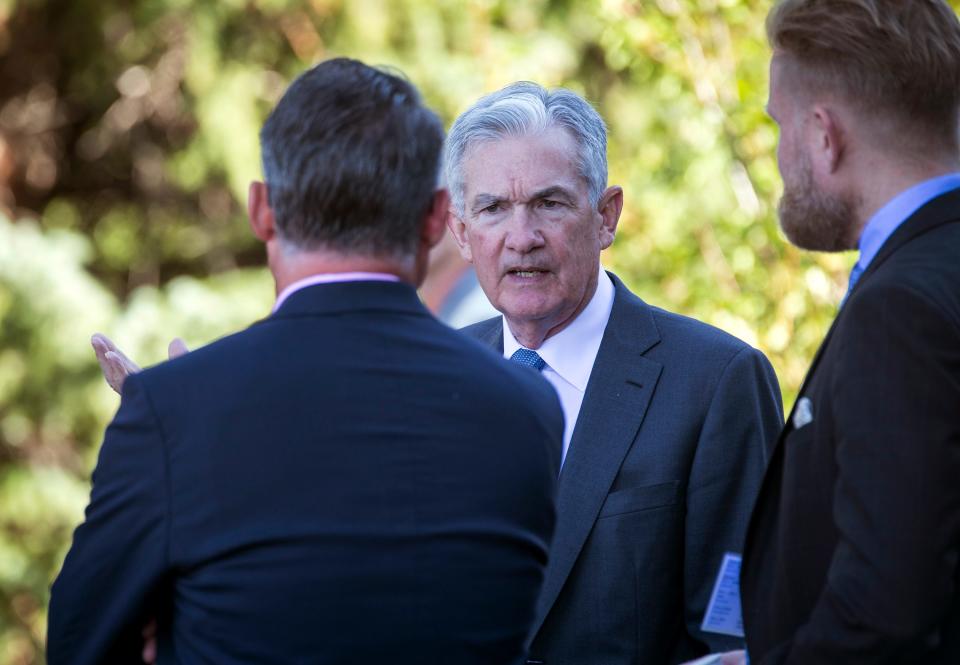What does hawkish mean? Jerome Powell's Jackson Hole speech signals this kind of Fed.
- Oops!Something went wrong.Please try again later.
If economists had to summarize Fed Chair Jerome Powell's Jackson Hole speech in one word, they'd likely go with hawkish.
As expected, Powell didn't explicitly state the size of the Fed's next rate hike, which is due on Sept. 21.
He instead left the door open for another 75-basis point rate hike following two consecutive ones at the Fed's most recent meetings saying that the decision "will depend on the totality of the incoming data and the evolving outlook."
He also added that "restoring price stability will likely require maintaining a restrictive policy stance for some time."
Yet markets have started to look beyond the Fed's current tight monetary stance and are pricing in future rate cuts. That dovish narrative contributed to July's impressive rally.
Jerome Powell in Jackson Hole: Speech hints at more aggressive interest rate hikes to control inflation
'Quiet quitting': Trend may lead to layoffs, and complicate the Fed's inflation fight
But Citi chief economist Andrew Hollenhorst said that Powell's Friday speech left "no room for dovish interpretations."
What does hawkish mean?
Generally, "hawkish" is defined as a militant or aggressive stance. For the economy, it means the Fed will prioritize lowering inflation and likely will raise interest rates despite the potential loss of some American jobs.
Powell mentioned inflation 44 times in his nearly 1,300-word speech, making it the top buzzword.
"While higher interest rates, slower growth, and softer labor market conditions will bring down inflation, they will also bring some pain to households and businesses," Powell said. "These are the unfortunate costs of reducing inflation. But a failure to restore price stability would mean far greater pain," he added.

What does dovish mean?
For the Fed, "dovish" means prioritizing the lowering of unemployment. For most of the pandemic the Fed took a dovish stance. It kept interest rates at near-zero levels to help reenergize the economy after more than 20 million people were unemployed.
Now that all of the jobs lost during the pandemic have been recovered, the Fed is able to do a complete 180-degree turn to focus on inflation. In fact, there are more job openings than people looking for work, Powell highlighted in his speech.
What is quiet quitting?: Employees suffering pandemic burnout say they've just stopped working as hard
What slowdown?: Job seekers juggle multiple offers, snag higher pay
"The ongoing strength of the labor market was clearly front of mind for Powell, and restraining labor demand appears to be a primary goal of policy now," JPMorgan's chief economist Michael Feroli said in a note to clients on Friday.
Elisabeth Buchwald is a personal finance and markets correspondent for USA TODAY. You can follow her on Twitter @BuchElisabeth and sign up for our Daily Money newsletter here
This article originally appeared on USA TODAY: Hawkish vs dovish meaning: Terms in Jackson Hole speech explained

